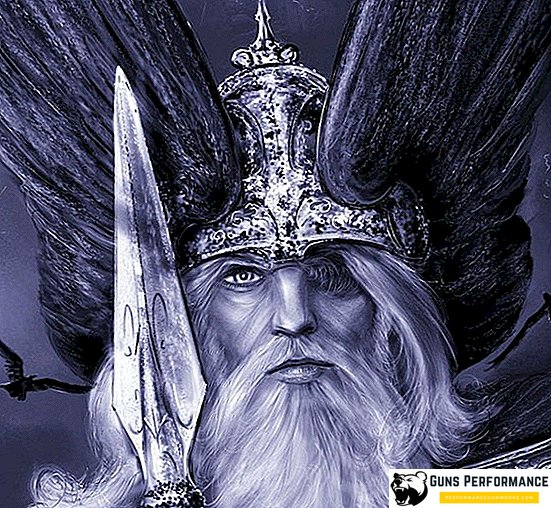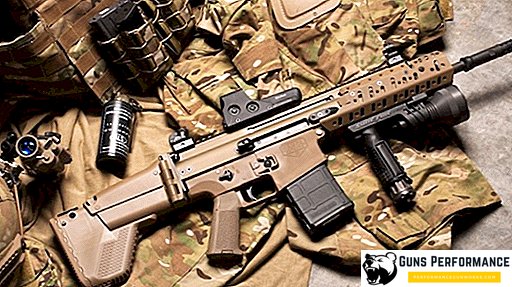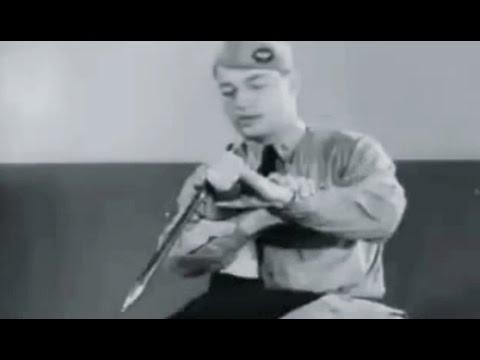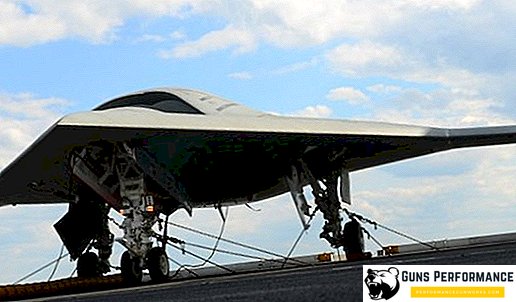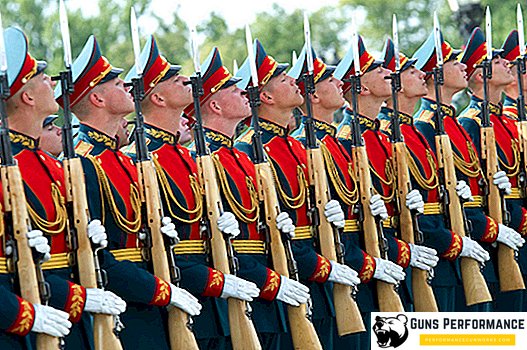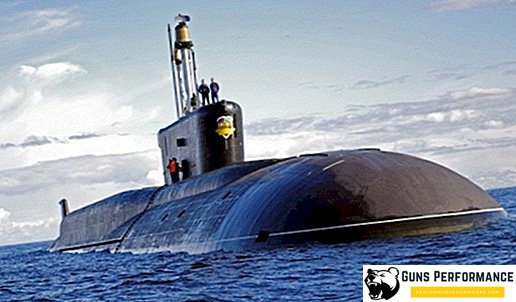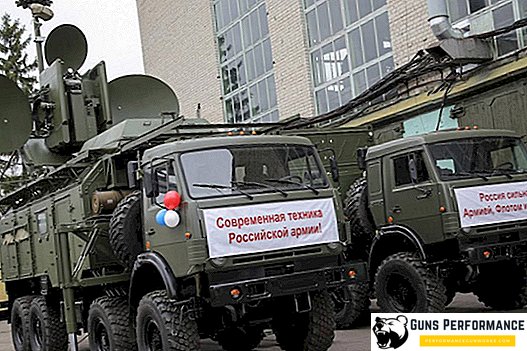In the USSR, there was an opinion that multiple rocket launchers (MLRS) were exclusively Soviet "know-how", and the Germans could not do anything like that. This is not entirely true. The Katyusha was not unique; several different MLRS systems were in service with the German army, although they differed from their Soviet counterparts.
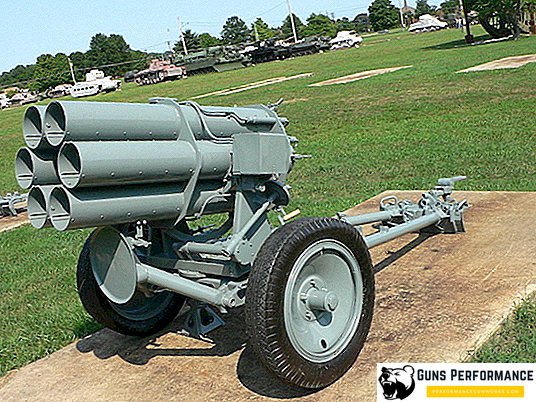
The most famous examples of such weapons created in Germany were undoubtedly the multi-barreled mortar Nebelwerfer 41 and Nebelwerfer 42. Soviet soldiers called them "Vanyushi" (by analogy with BM-13) or "donkeys" for their distinctive sound.
A bit of history
Work on the creation of multiple launch rocket systems started in Germany in the early 1930s. It would seem, why engage in unguided rockets, which significantly lose in accuracy to artillery systems? However, there was a reason for this.
The Germans took into account the experience of the First World War, with a massive use of chemical warfare agents. MLRS perfectly suited for this purpose, moreover, such weapons did not fall under the restrictions of the Versailles Treaty and the Germans were free to engage in its development.

However, the Soviet "Katyusha" also designed for the delivery of combat gases. The military of that time was absolutely sure that the next conflict would not be possible without chemical weapons.
In the mid-1930s, German engineer Nebel developed a 150-mm caliber missile and a six-barrel launcher for it. In 1937, it began testing. This weapon was called a d-type smoke mortar. It was adopted by the German army in 1940, and already in 1941 received another name, which is generally accepted for this weapon: Nebelwerfer 41 (Nb.W 41).
In 1940, special divisions were created in the German army, armed with Nebelwerfer 41. Then the regiments of smoke appeared. According to the official version, they were supposed to install smoke screens at the front, but it is absolutely clear that Germany was preparing for a chemical war in this way. However, in the arsenal of these units were high-explosive fragmentation ammunition.
It should be noted that although Germany was losing to the allies in the number of chemical weapons, it was clearly ahead of them in its quality. In the 1930s, the Germans managed to make a real breakthrough in this area: they invented nerve gases. These toxic substances are today considered the most powerful and deadly. First in Germany, a herd was invented, and then even more dangerous sarin and soman. This terrible weapon was produced in Germany on an industrial scale, and why Hitler did not use it, historians still argue.
For the first time jet mortars were used by the Germans in France. Also Nebelwerfer 41 Germans used during the landing on Crete. On the Eastern Front, this weapon was used almost from the first days: this mortar fired on defenders of the Brest Fortress, was used during the siege of Sevastopol.

In 1942, three special regiments were created as part of the German army, as well as nine separate divisions armed with jet mortars. And since 1943, six-barrel mortars Nebelwerfer 41 began to include infantry divisions in artillery regiments. Usually each division was staffed with two (less frequently three) mortar battalions.
This weapon has proven itself very well on the Eastern Front: light and precise mortars had high firepower.
The main drawback of the Nebelwerfer 41 and the Nebelwerfer 42 was the well-marked smoky trail left by the missiles in flight, as well as the strong sound that served as an additional factor. Given the not too high mobility of the complex, these two drawbacks often became fatal for mortars and their calculations.

In 1942, a self-propelled MLRS 15 cm Panzerwerfer 42 was created to eliminate this shortcoming. It was based on the semi-tracked Opel Maultier. It was placed launcher of ten barrels, the car received anti-fragmentation booking and was armed with a machine gun.
The car turned out quite successful and was actively used until the end of the war.
Also self-propelled MLRS was created on the basis of the army truck Opel, but it turned out too heavy and not maneuverable.
In 1943 another similar rocket launcher began to arrive in the army - Nebelwerfer 42, which had a higher firing capacity. This mortar had five barrels of 210 mm caliber and fired shells weighing 113 kg. Nebelwerfer 42 was equipped with a removable 150-mm trunks, which were mounted inside the main.
Also in 1941, the Wehrmacht was adopted by the MLRS of even greater power: 28/32 cm Nebelwerfer 41. It was a two-tier farm, which was fixed on a sliding carriage. Guides had a lattice design and could fire both 280-mm and 320-mm rocket projectiles. However, the increased mass of these munitions made the firing range even smaller: it was about two kilometers. The 280-mm rocket contained 45 kg of explosives, and its entry could destroy a large structure, and the 320-mm fueled with crude oil and was an incendiary ammunition.

Sometimes these missiles were launched directly from the ground: for this they were installed in inclined pits, the main thing was to give the rocket the right angle. The accuracy of launching missiles in a similar way was extremely low.
Description of 6-barreled mortar
The basis for the creation of Nebelwerfer 41 mortars was the Pak 35/36 anti-tank gun. On the carriage of this gun was installed six tubular guides with a length of 1.3 meters.
The carriage had sliding bipods and a front stop, he leaned on them in a fighting position. It had turning and lifting mechanisms. In fully equipped position, the mortar weighed 770 kg, and in the marching position - 515 kg. For short distances, the jet mortar rolled over by forces of calculation. The carriage was equipped with low-pressure pneumatic tires and springs.
Missiles were charged from the breech of the installation, after loading, they were fixed in a special holder. Missile launching took place remotely, from shelter. Electric detonator was invested in one of the rocket nozzles. First, three missiles were produced, then three more. The volley was completed in 10 seconds, it took 1.5 minutes to recharge. The calculation consisted of four people.

One of the main problems for the MLRS at that time (and even today) was the stabilization of a missile in flight. The method of stabilization was the main difference between the Soviet BM-13 and the German installations Nebelwerfer 41 and Nebelwerfer 42.
Soviet missiles have stabilized due to the length of the rail guides and stabilizers of the rocket. Missiles installations Nebelwerfer 41 and Nebelwerfer 42 stabilized due to rotation around its own axis. In each of the ways there were pros and cons.
Stabilization by rotation allowed the rocket mortar to be made more compact both in width and in length. The German mortar didn’t need too long guides (as on the BM-13), it also managed without stabilizers, which made the projectiles more compact.

However, the rotation in flight took away part of the energy of the powder engines, which adversely affected the firing range.
The rocket jet engine was in the front, and the warhead was in the rear. It was a cylinder with an explosive through which the nozzles passed. There are 28 nozzles in the rocket, each of them had a tilt angle to the weapon axis of 14 degrees. After launch, they spun the projectile and stabilized its flight. It should be said that Nebelwerfer 41 and Nebelwerfer 42 were distinguished by quite good accuracy.
The same missile stabilization system is used on many modern MLRS ammunition.
Separately, you should stay on the powder, which was used in mortars. Another Soviet myth is the fact that the Germans failed to capture any of the Soviet "Katyushas". It is not true. In 1942, the Germans seized the BM-13, along with ammunition. There was nothing tricky in the design of the rocket, and even more so the guides of the Katyusha: it was not difficult to copy them. The problem was the manufacture of powder checkers of smokeless powder, which was used on the BM-13. The Germans failed to repeat the Soviet technology, they had to invent their own.
By the end of 1943, the German designers (or rather, the Czech, who worked for the Germans) created an analogue of the Soviet "Katyusha", they even managed to significantly improve it. The launch was made from rail guides, but at the same time the rocket rotated in flight due to stabilizers mounted at an angle. The accuracy of such a missile was higher than the BM-13, and the size of the launcher is much smaller.
However, the Germans simply did not have enough time to launch their Katyushas into production.
In the Nebelwerfer 41, compressed black smoky powder was used as fuel in the early stages, but its burning was uneven, it gave a lot of smoke, which was a factor of disguise. Therefore, later, smokeless powder checkers were used as fuel.
Specifications TTX
Below are the performance characteristics of the Nebelwerfer 41 reactive mortar.
| Caliber, mm | 158,5 |
| Weight in combat and traveling position, kg | 510 |
| Maximum firing range, m | 6100 |
| Effective range, m | 4000-6000 |
| Vertical shelling angles | from -100 to +800 divisions of sight |
| Horizontal firing angles | ± 210 divisions |


